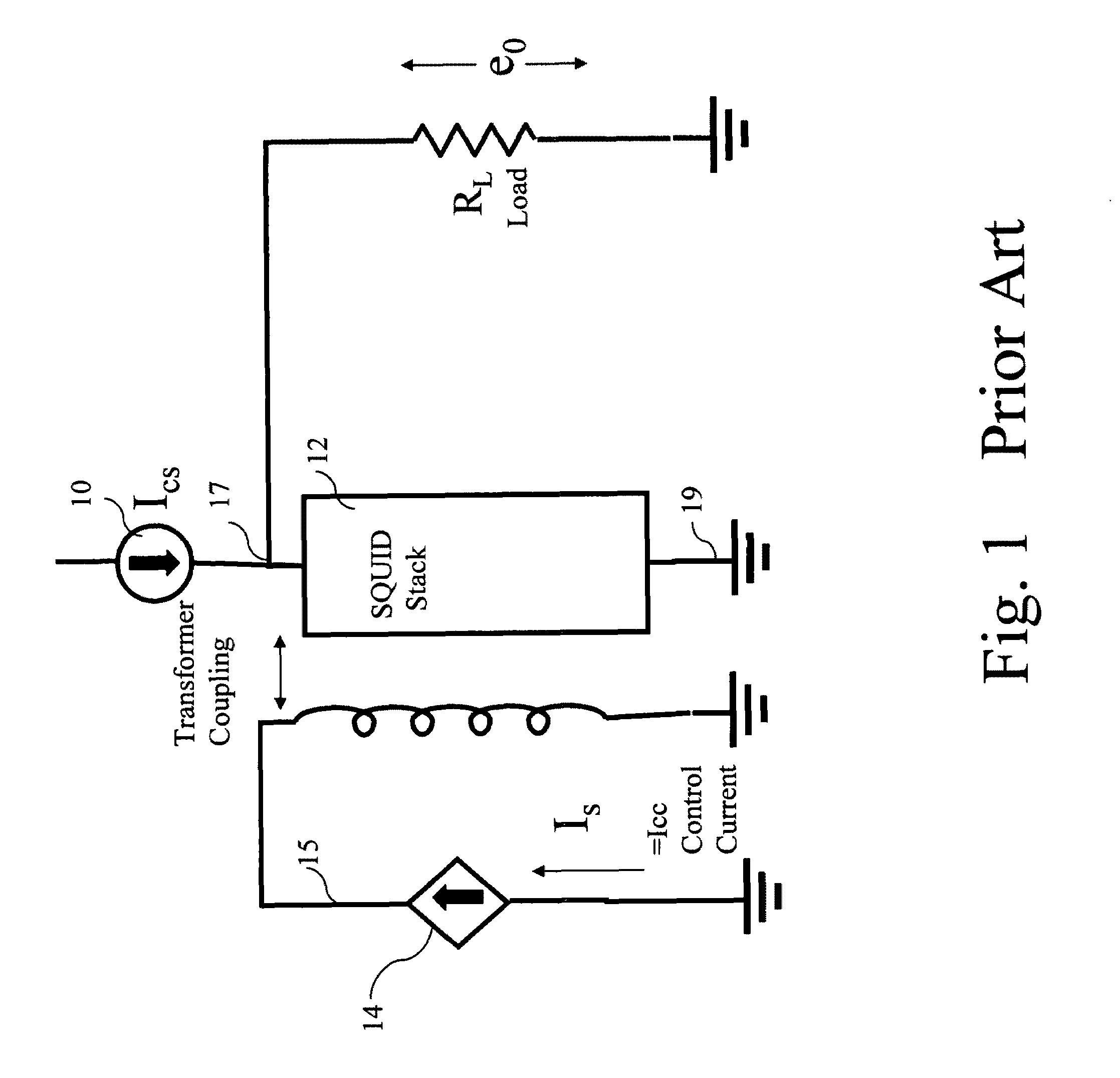Superconducting switching amplifier
a switching amplifier and superconducting technology, applied in the direction of pulse generator, pulse generator, electric pulse generator circuit, etc., can solve the problems of not well defined output condition of resistive state, inability to switch squid from resistive state to superconductive state, and inconvenient operation of resistive state, etc., to achieve selectively raised or lowered
- Summary
- Abstract
- Description
- Claims
- Application Information
AI Technical Summary
Benefits of technology
Problems solved by technology
Method used
Image
Examples
Embodiment Construction
[0038]Referring to FIG. 4, there is shown an amplifier 7 comprised of a first SQUID stack 30 and a second SQUID stack 40. SQUID stack 30 is connected between a first voltage line 21 and on output terminal 23 and SQUID stack 40 is connected between output terminal 23 and a second voltage line 25. In FIG. 4, a voltage (+)V1 is applied to line 21 and a voltage of (−)V1 is applied to line 25. A control line 31 for controlling the critical current (Ic) level of SQUID stack 30 is formed to extend and wind about the SQUIDs of stack 30 and a control line 33 for controlling the critical current level of SQUID stack 40 is formed to extend and wind about the SQUIDs of stack 40. A load resistor RL is shown connected between output line 23 and a point of reference potential (i.e., ground, but another suitable voltage between +V1 and −V1 could be used instead).
[0039]Complementary input signals, denoted as Icc (also SET 1) and IccB (also RESET 1), are respectively applied to control lines 31 and 3...
PUM
 Login to View More
Login to View More Abstract
Description
Claims
Application Information
 Login to View More
Login to View More - R&D
- Intellectual Property
- Life Sciences
- Materials
- Tech Scout
- Unparalleled Data Quality
- Higher Quality Content
- 60% Fewer Hallucinations
Browse by: Latest US Patents, China's latest patents, Technical Efficacy Thesaurus, Application Domain, Technology Topic, Popular Technical Reports.
© 2025 PatSnap. All rights reserved.Legal|Privacy policy|Modern Slavery Act Transparency Statement|Sitemap|About US| Contact US: help@patsnap.com



